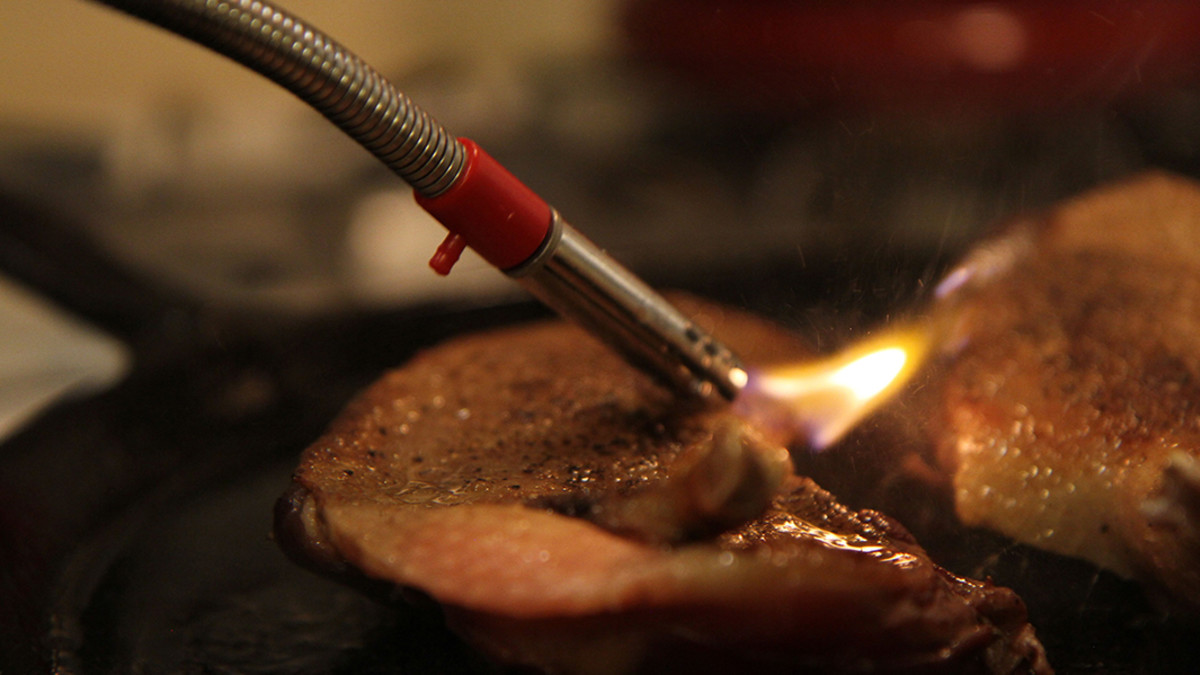
After plucking a bird, particularly ducks, you might find hard-to-remove pin feathers and also small hair-like feathers that are difficult to grab with your fingers.
These become especially apparent on ducks once you begin the cooking process, as the skin tightens and they stand up on end. A great way to remove these is by burning them off with a lighter, torch, or simply by using your stove burner.
All game birds, whether upland or waterfowl, can benefit from a little aging. This improves the flavor and tenderizes the meat. Gut the bird, and then thoroughly rinse and dry the body cavity. Place the gutted bird in a paper grocery bag and let it set on the shelf of your refrigerator for a few days. You can then pluck the bird and cook it, or freeze it for later.
Removing Shotgun Pellets
Shotgun pellets often grab feathers on their way into a bird and then carry them deep into the flesh. You’ll notice these feathers as dark blotches beneath the skin after you pluck the bird. A great way to remove them is to insert a wooden toothpick into the wound channel and then twist it.
When you pull the toothpick back, the feather will come with it. This also works well for removing tufts of hair from shotgun-killed squirrels and rabbits.
Freezer Ready
When packaging birds for the freezer, two methods that are equally acceptable. They can be vacuum-sealed or double wrapped in layers of plastic wrap and waxed freezer paper. Smaller birds, such as quail, do well when frozen inside a container filled with water.
Giblets are best retained in the same manner, by submerging them in water and freezing them.




Conversation